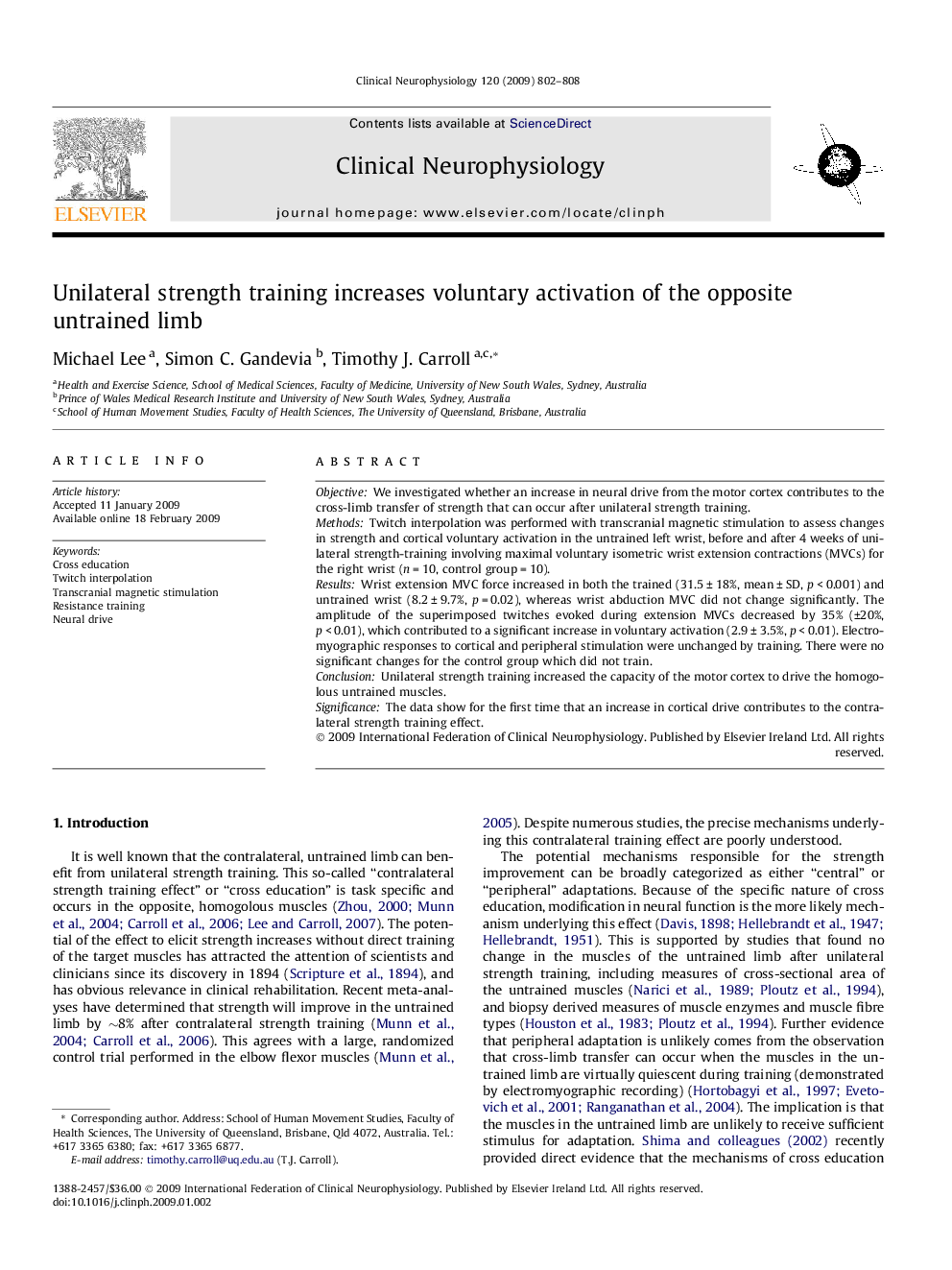| Article ID | Journal | Published Year | Pages | File Type |
|---|---|---|---|---|
| 3046327 | Clinical Neurophysiology | 2009 | 7 Pages |
ObjectiveWe investigated whether an increase in neural drive from the motor cortex contributes to the cross-limb transfer of strength that can occur after unilateral strength training.MethodsTwitch interpolation was performed with transcranial magnetic stimulation to assess changes in strength and cortical voluntary activation in the untrained left wrist, before and after 4 weeks of unilateral strength-training involving maximal voluntary isometric wrist extension contractions (MVCs) for the right wrist (n = 10, control group = 10).ResultsWrist extension MVC force increased in both the trained (31.5 ± 18%, mean ± SD, p < 0.001) and untrained wrist (8.2 ± 9.7%, p = 0.02), whereas wrist abduction MVC did not change significantly. The amplitude of the superimposed twitches evoked during extension MVCs decreased by 35% (±20%, p < 0.01), which contributed to a significant increase in voluntary activation (2.9 ± 3.5%, p < 0.01). Electromyographic responses to cortical and peripheral stimulation were unchanged by training. There were no significant changes for the control group which did not train.ConclusionUnilateral strength training increased the capacity of the motor cortex to drive the homogolous untrained muscles.SignificanceThe data show for the first time that an increase in cortical drive contributes to the contralateral strength training effect.
